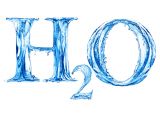Water quality in dialysis, pyrogen retention of membranes and ultrafilters
 Due to growth of microorganisms such as fungi and bacteria, dialysate may, in particular in developing countries or when the water purification system is not sanitized properly, occasionally be contaminated with pyrogens.
Due to growth of microorganisms such as fungi and bacteria, dialysate may, in particular in developing countries or when the water purification system is not sanitized properly, occasionally be contaminated with pyrogens.
When pyrogens penetrate through the hemodialysis membrane from the dialysate compartment of the dialyzer into blood of patients this may lead to acute pyrogenic reactions (fever etc.). Moreover continuous sub-acute pyrogen exposure may contribute to chronic inflammation in dialysis patients. To avoid such undesirable and potentially hazardous calamity, today most dialysis machines and water purification systems are equipped with ultrafilters which remove pyrogens from such fluids. Ultrafilters can be tested according to the Japanese Industry Standard (JIS K 3824-1990) or the draft JMED/JSDT standard (draft 2010). Similar standards are neither available in Europe nor in the US. Since ultrafilters have a limited capacity and may have, in rare cases a defect, there is a clinical need that hemodialysis membranes are also offering an additional barrier to pyrogens.
We offer in vitro experiments to determine pyrogen retention of ultrafilters, dialyzers and membranes under realistic experimental conditions. As challenge material we are using sterile filtered supernatants of bacterial cultures (Pseudomonas or E. coli) or isolated lipopolysaccharide preparations (LPS) from different species.
Two different in vitro models for pyrogen retention of dialysis membranes are available in our lab:
- Cross-flow recirculation with human blood
- Cross-flow recirculation with saline (as a model of the priming procedure of the dialyser in the clinic)
Biological activity of pyrogens is determined by measuring IL-1β (ELISA) in blood. IL-1β is one of the cytokines which is generated upon pyrogen-stimulated activation of monocytes. The test is called monocyte activation test (MAT). Endotoxins in aqueous solutions are quantified by the Limulus-test (LAL-assay). A publication on this methodology you find here.